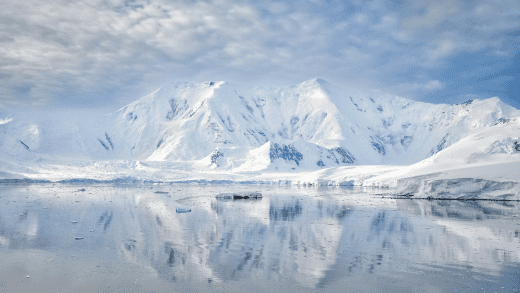Antarctica is a place of extremes and the coldest, highest, driest and windiest continent on Earth. Despite the challenges presented by its remote location and the significant preparation and specialized equipment required to safely visit, Antarctica has captivated the imaginations of explorers all over the world for centuries. Packing supplies for an expedition to this arctic desert is no small task and sugar has always been an important item on every adventurer’s list as an important source of fuel.
It is unclear who first discovered Antarctica. Scientific evidence suggests that the Polynesians were the first to arrive 1,300 years ago. European explorers approached in 1520, and the Russians first saw Antarctica on January 28, 1820, as well as numerous whaling and sealing ships in the Southern Ocean. Antarctica, considered the world’s last frontier, eluded the flag-in-ground race of nations until the turn of the 20th century. From 1897 to 1922, a period of time known as the “Heroic Age of Antarctic Exploration,” eight countries launched 16 major expeditions.
Sir Robert Falcon Scott of England led the three-year Discovery Expedition in 1901, which provided the first sighting of emperor penguins. Scott and his team launched a second Antarctic expedition in 1910 with the goal of being the first to reach the South Pole. Due to brutal weather, restricted resources, and the physical strains of the environment, they did not reach the South Pole until 1912 and soon learned that Norwegian explorer Roald Amundsen had beaten them 34 days earlier. Scott and his crew tragically perished from hypothermia in 1912 while returning from their South Pole expedition.
Sir Ernest Shackleton is known for his legendary Endurance expedition, a British attempt to become the first to cross Antarctica from one coast to another on foot via the South Pole in 1914. However, the expedition became the incredible survival story of the crew after their ship, the Endurance, became trapped and eventually crushed by ice in the Weddell Sea, stranding them on Elephant Island. Their rescue took place after Shackleton and a few others set out on a perilous journey of 800 miles to South Georgia island in lifeboats in search of help. Despite its failure to cross Antarctica, the expedition is renowned for its remarkable resilience and leadership in the face of extreme adversity. In the modern era, notable expeditions include American Ann Bancroft’s first all-women expedition to the South Pole in 1993, the year she also became the first woman to reach both the North and South Poles. These expeditions have left a legacy of hand-drawn maps, scientific research and geographic exploration that has shaped our world today.
For Arctic explorers and scientists throughout the decades, a high calorie diet has always been of utmost importance and what can make or break an expedition. The human body burns calories from maintaining a proper internal temperature and other functions needed for survival. Antarctica’s low temperatures force the body to expend a large number of calories to maintain homeostasis, despite protective clothes worn by Arctic explorers, and weight loss occurs. While the United States Department of Agriculture (USDA) recommends most Americans intake between 1,600-3,000 calories a day, those spending time in the Arctic must consume between 3,200-5,000 calories a day.
Explorers of all kinds have always understood the need for high-calorie intake. Scott consumed roughly 4,590 calories per day with a ration diet consisting of sugar, cocoa, biscuits, pemmican, a traditional high-calorie Native American mix of dried meat, fat, and sometimes berries, butter, and cheese. In 1827, members of Sir William Edward Parry’s expedition to the North Pole drank a pint of cocoa mixed with biscuit powder each morning. The daily ration for the final leg of Shackleton’s 1910 expedition to the South Pole included 16 grams of cocoa and 85 grams of sugar, made into a pot of hot chocolate every morning and five nights a week. In 1989, American explorer Will Steger’s team of six was the first to cross Antarctica via dogsled, consuming over 2,000 cups of Swiss Miss cocoa on the way. Cocoa has always been a welcome, morale-boosting beverage for those navigating this polar continent whose average interior winter temperatures are around -46 degrees Fahrenheit and 14 degrees Fahrenheit on its coast.
While several countries including Chile, Argentina, Australia, New Zealand, and the UK do stake territorial claims in Antarctica, there has never been any mass settlement of the continent. Numerous countries also maintain research bases there and some scientists live there for part of the year. McMurdo Research Station, run by the United States, is the largest station with a summer population of 1,000 people. Amundsen-Scott, the next largest station, has a summer peak population of just 250. Despite these relatively small populations, feeding the scientists stationed there is a monumental feat that requires human engineering and fortitude. Today the Antarctic diet is a little different and vegetables, meats and fish, pasta, porridge, muesli, jam, and milk have all found their way into the stomachs of researchers. However, old favorites such as sugar remain a staple of Antarctic cuisine and continue providing an important source of flavor and fuel to adventurers and scientists drawn to the fierce beauty of “The White Continent.”





Get Social with #MoreToSugar